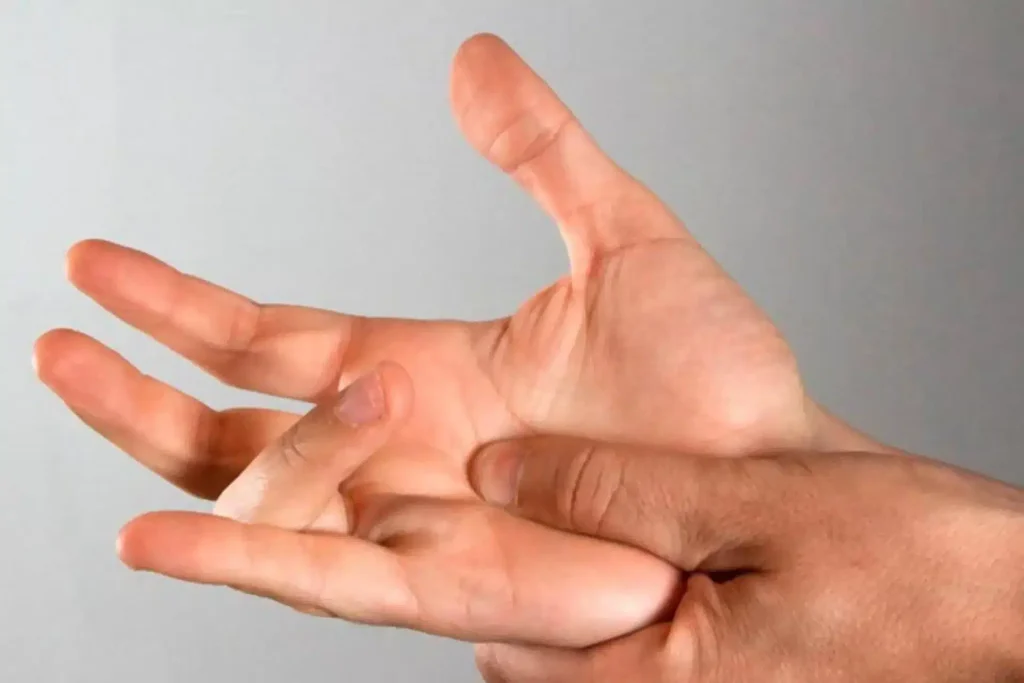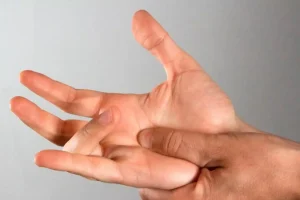What is “Trigger Finger”?
Trigger finger is a condition that affects the mobility of the fingers.
It is characterized by a locking or snapping sensation when trying to bend or straighten the affected finger.
Although it is not dangerous, it can cause pain and discomfort in daily activities.
Main Causes
Trigger finger occurs when the tendons involved in finger flexion become inflamed, leading to the formation of nodules or a thickening of the surrounding tissues. These changes prevent the tendon from sliding smoothly, causing a mechanical block and the characteristic “snap” of the finger. The main causes include:
- Excessive strain on the fingers, which can inflame the tendons;
- Pre-existing conditions such as arthritis, osteoarthritis, or diabetes, which increase the risk of developing the condition;
- Minor injuries or trauma that directly cause inflammation;
- Anatomical predisposition.
Symptoms of Trigger Finger
The most common symptoms are:
- Snapping or locking: the finger gets stuck or snaps when forced to move;
- Pain: usually located at the base of the finger;
- Stiffness: difficulty moving the finger, especially in the morning;
- Nodule: a small, hard lump at the base of the finger.

Diagnosis and Treatment
The doctor can usually diagnose trigger finger simply by observing the movement of the finger.
The main treatments include:
- Rest: avoiding activities that may worsen the inflammation;
- Immobilization: using a splint to limit finger movement helps reduce stress on the inflamed structures and prevents pain caused by snapping;
- Treating inflammation with anti-inflammatory medications or steroid injections. Specific therapies, such as tecar therapy, can also help reduce inflammation and relieve symptoms;
- Specific exercises;
- Surgery: in more severe cases, a minor surgical procedure may be required.
Do you suffer from finger pain or stiffness?
Don’t wait for the problem to worsen. Our team of specialists can help you restore mobility and comfort with a personalized treatment plan. Book a consultation with our occupational therapists today.
The Importance of Occupational Therapy
Occupational therapists play a key role in the treatment of trigger finger. First, the therapist carries out the following assessments:
- Movement analysis: observing how the patient uses the affected hand and finger during various activities;
- Identification of risk factors: determining which activities or movements may aggravate symptoms;
- Pain and function assessment: measuring pain levels and functional limitations.
Based on these evaluations, the occupational therapist focuses on:
- Education: teaching patients how to avoid movements that may worsen the condition;
- Mobility and stretching exercises: tailored exercises to maintain tendon mobility and reduce stiffness;
- Strengthening exercises: specific programs to reinforce hand and wrist muscles;
- Ergonomic education and adaptations: suggesting grip modifications to prevent strain and recommending assistive devices to reduce effort when handling objects;
- Splints/orthoses: creating custom splints to avoid harmful or painful movements, allowing the tendon to rest during daily activities.
Furthermore, occupational therapy also promotes the prevention of relapses, helping patients develop sustainable strategies to manage trigger finger and improve quality of life.
Conclusion
Occupational therapy plays a crucial role in the treatment of trigger finger by providing practical and personalized solutions. Through a combination of exercises, education, and environmental adaptations, occupational therapists help patients reduce pain, improve hand function, and prevent further complications. This patient-centered approach not only addresses immediate symptoms but also supports long-term wellbeing.


